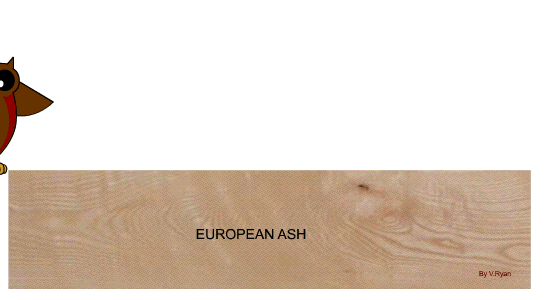|
General Description: The heartwood is cream to pale tan coloured.
In most logs a light brown heartwood is found which is strong and sound.
The wood is tough, flexible and straight grained. The texture is coarse
but even. The weight varies between 510-830 kg/m3 (32-51 lb/ft3). average
710 kg/m3 (44lb/ft3); specific gravity 0.71.
Unusual Characteristics: OLIVE ASH: This very attractive feature is
found mainly in old park grown trees where the light brown to dark grey
heart colour is predominant with only a little white timber at the edge of
the boards. The marbled effect is very similar to that found in
Mediterranean Olivewood.
RIPPLED ASH: This is an even mass of ripple grain running at right
angles to the grain of the wood. This can be found in both white and
coloured Ash and the effect is very similar to that found in Ripple/Fiddleback
Sycamore.When both Ripple and Olive are combined the effect is quite
stunning. Selected logs are held in stock in the round for
conversion to customers requirements.
Mechanical Properties: This tough, heavy, dense timber is fairly
split resistant and has excellent steam bending properties, and with low
stiffness and medium resistance to crushing and shock loads.
Working Properties: Ash has a moderate blunting effect on tools and
offers medium resistance to cutting edges, but it works well with all hand
and machine tools. It is necessary to pre-bore for nailing. The wood
stains easily and can be brought to an excellent smooth finish.
Durability: The wood is non-durable and perishable. It is
susceptible to insect attack by both powder post and common furniture
beetle. The heartwood is moderately resistant to preservative treatment,
but black heartwood is resistant.
Uses: Sports Ash is valued around the world for sports goods and
striking-tool handles. Used for bats, racquets, hockey sticks, polo mallet
heads, gymnasium equipment, cricket stumps and snooker cues; bent parts
for boat building, canoes, oars, tillers, deck beams and frames.
Extensively used for cabinet making and furniture, chair making,
agricultural implements, vehicle bodies, wheelwrighting, turning and
laminated articles.
|
